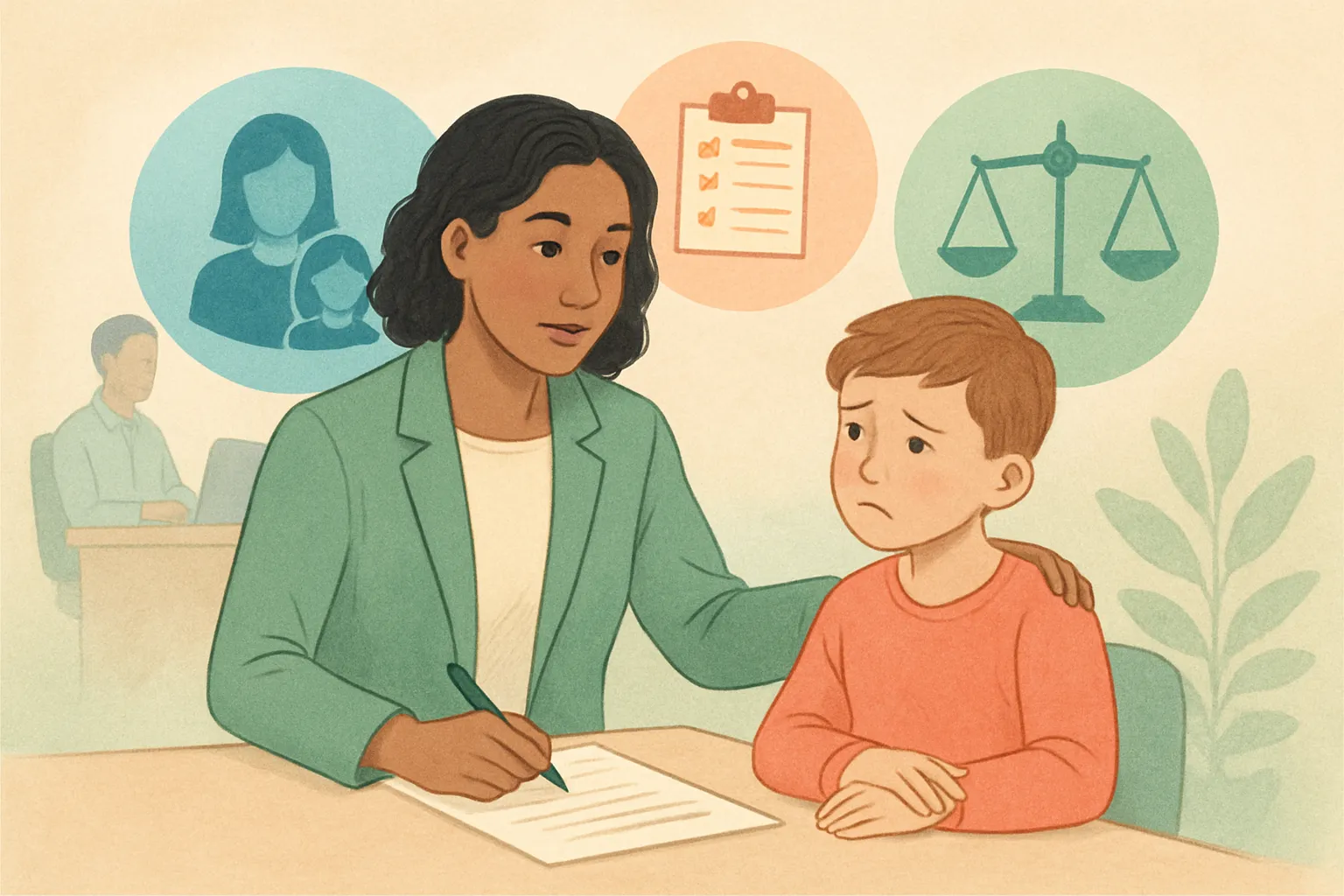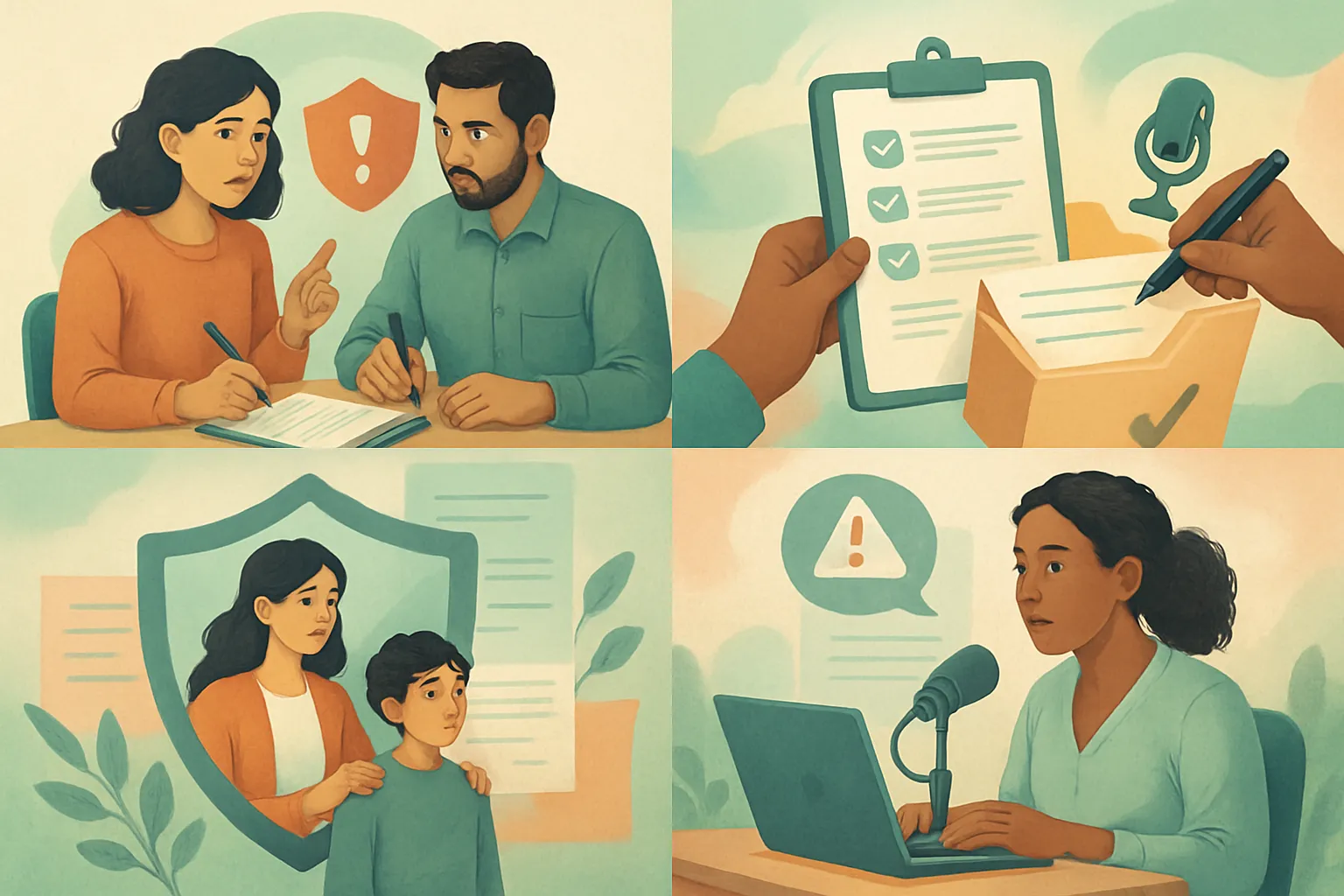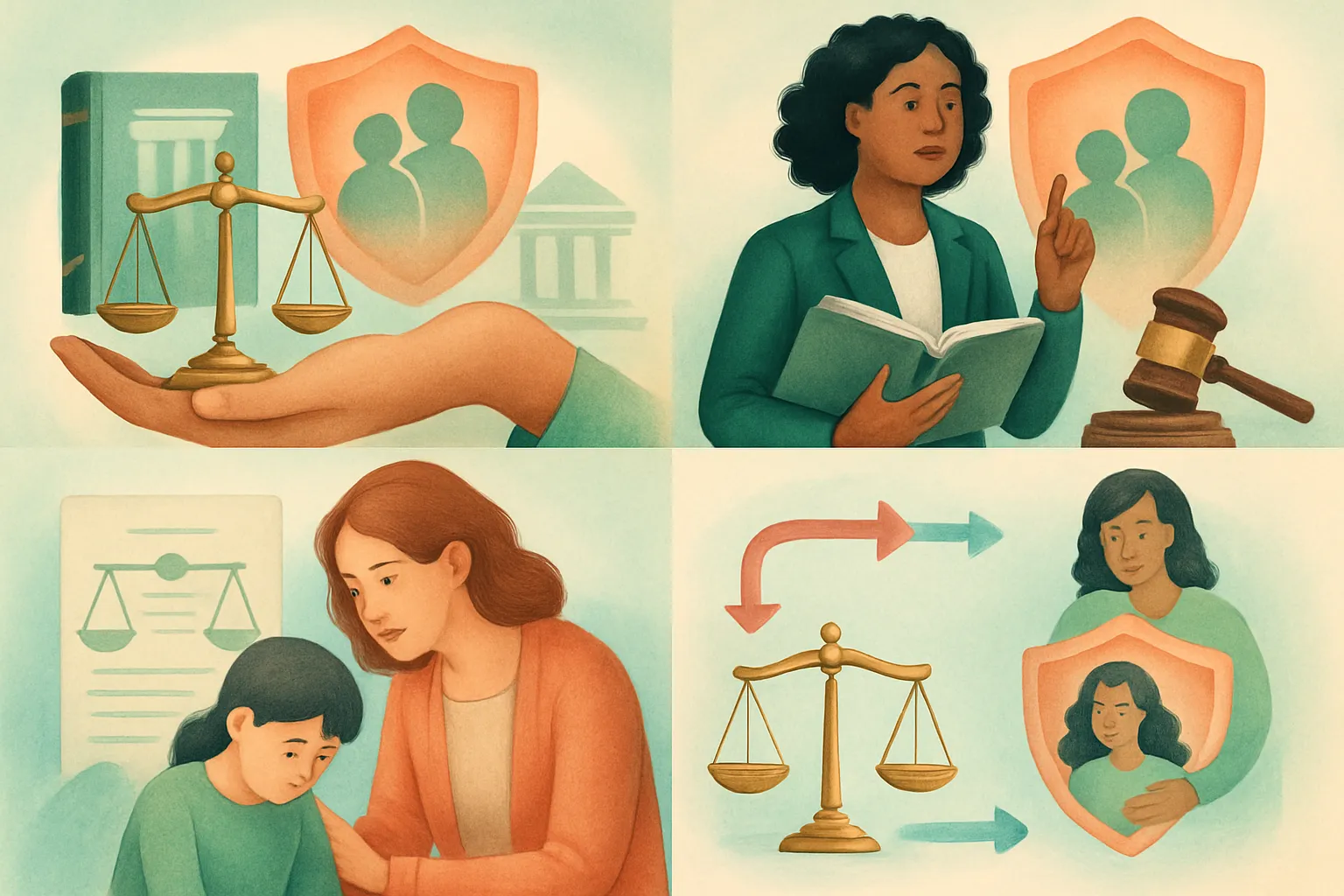Curriculum
- 15 Sections
- 15 Lessons
- 2 Weeks
- Understanding Your Role2
- Duty of Care2
- Equality and diversity2
- Person-centred care and empowerment2
- Communication2
- Privacy and dignity2
- Fluids and nutrition2
- Awareness of mental health, dementia and learning disabilities2
- Safeguarding adults2
- Safeguarding children2
- Basic life support2
- Health and safety2
- Handling information2
- Infection prevention and control2
- Understanding learning disabilities and autism2
Curriculum
Safeguarding children
Learning Objective:
Understand and apply legal frameworks and ethical responsibilities in safeguarding children in health and care settings.
Understand roles and responsibilities

As a care worker, safeguarding children is a central responsibility. It involves remaining calm, professional, and objective at all times. Key responsibilities include listening to children without judgment, accurately recording any complaints or concerns, and promptly reporting these to your manager or following your organization’s protocols. For example, if a child raises a complaint about their care, it’s crucial to document the facts and maintain objectivity. Each action you take, from noticing the signs of potential harm to reporting them, underpins your legal and ethical obligations, ensuring children’s safety and well-being within the health and social care system.
- Remain calm and professional
- Listening non-judgmentally
- Recording clearly
- Reporting to your manager
Maintaining a level-headed approach helps ensure children’s emotions are managed positively.
Essential to make children feel heard and valued without fear of further repercussions.
Accurate records ensure the correct information is relayed for further actions.
Ensures concerns are addressed promptly, in line with established protocols.
Identify signs of abuse and neglect

Recognizing the signs of abuse and neglect is crucial for safeguarding children. Abuse can be physical, emotional, or sexual, while neglect involves failure to meet a child’s basic needs. Unexplained injuries, sudden changes in behavior, or signs of poor hygiene may indicate abuse. Often, indications of abuse are subtle, necessitating vigilance from care workers. It is essential to pay attention to patterns or unusual behaviors and physical signs that go beyond the ordinary.
- Physical Signs
- Emotional and Behavioral Signs
- Environmental Indicators
- Neglect Indicators
Look for unexplained bruises, burns, or fractures that might not match the explanation given. These signs may indicate physical abuse if they occur frequently or follow a noticeable pattern.
Children may become withdrawn, display extreme behaviors, or exhibit age-inappropriate actions as indicators of emotional abuse. Pay attention to abrupt changes that seem out of character.
Remarkably inadequate living conditions or lack of basic resources such as proper food, clothing, or hygiene products can be warning signs of neglect.
Chronic absenteeism from school, persistent hunger, or consistently dirty clothing should be noted as possible signs of neglect and should be investigated further.
Reporting and recording protocols

Effective safeguarding requires understanding the key legal and policy frameworks that support children’s safety. Laws like the Health & Safety Act, Data Protection Act, Equality Act, Mental Capacity Act, and the Care Act establish specific obligations, ensuring children’s protection. These laws are reinforced by ethical standards such as the CQC fundamental standards and the Skills for Care Code of Conduct, emphasizing care, compassion, competence, communication, courage, and commitment. When poor practices are observed, care workers are encouraged to report them, knowing they are legally protected when whistleblowing.
Legal and Policy Framework

Early intervention is essential in safeguarding children. By addressing issues promptly, potential harm can be prevented, leading to better outcomes in children’s welfare and development. Immediate reporting and intervention can significantly alter the course of a child’s experience, helping to foster a protective environment. Legal responsibilities dictate that action be taken swiftly when abuse or neglect is suspected, underscoring the importance of early intervention from both an ethical and a practical standpoint.
- Observe behavioral changes
- Check for signs of distress
- Understand organisational procedures
- Communicate with your manager
Note any sudden or unusual changes in a child’s behavior that might suggest something is amiss.
Be attentive to any signs that a child may be experiencing distress or discomfort, which could be indicative of a larger issue.
Ensure you are familiar with the steps your organization recommends for addressing potential safeguarding concerns.
Keep open communication with your manager to facilitate immediate and appropriate interventions.